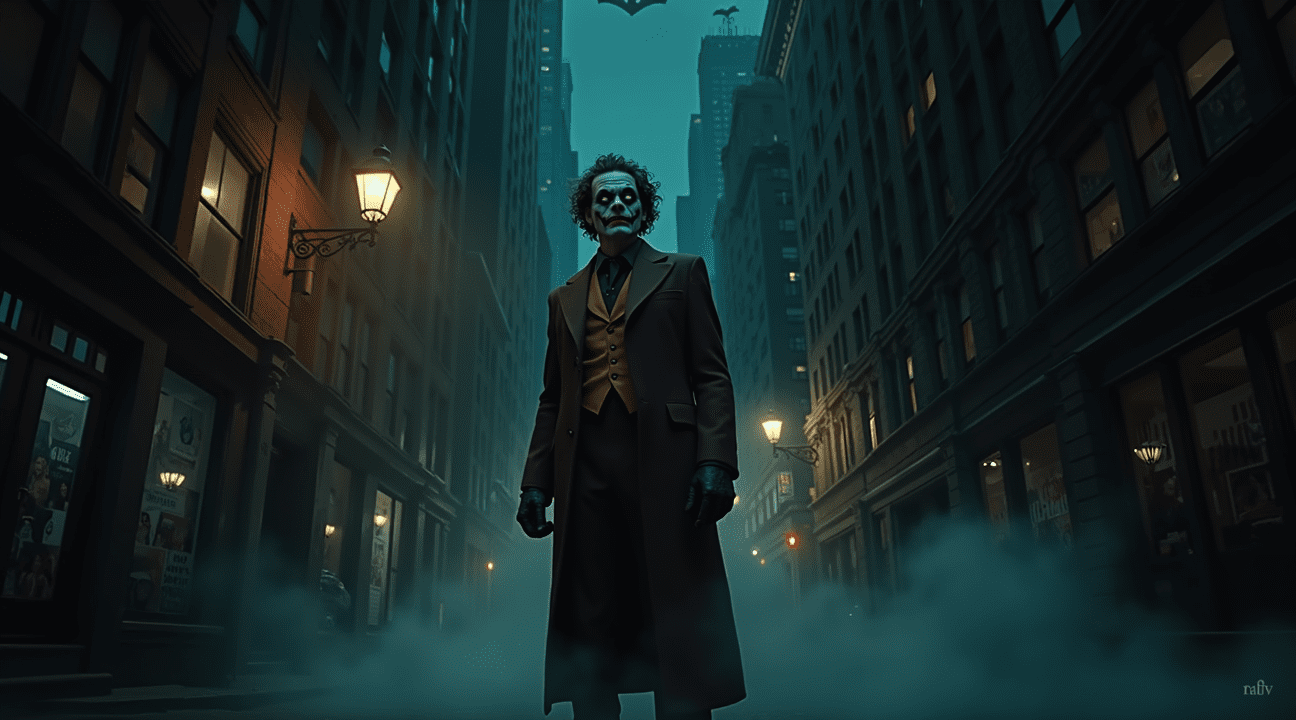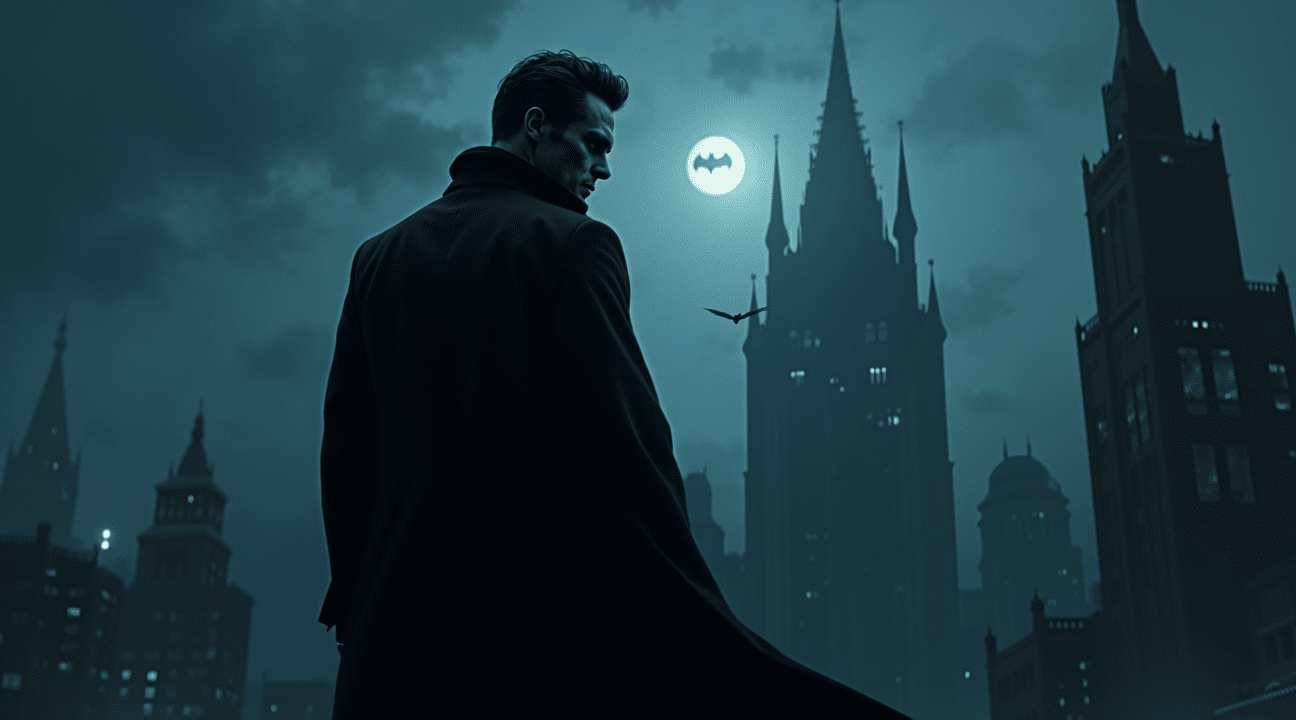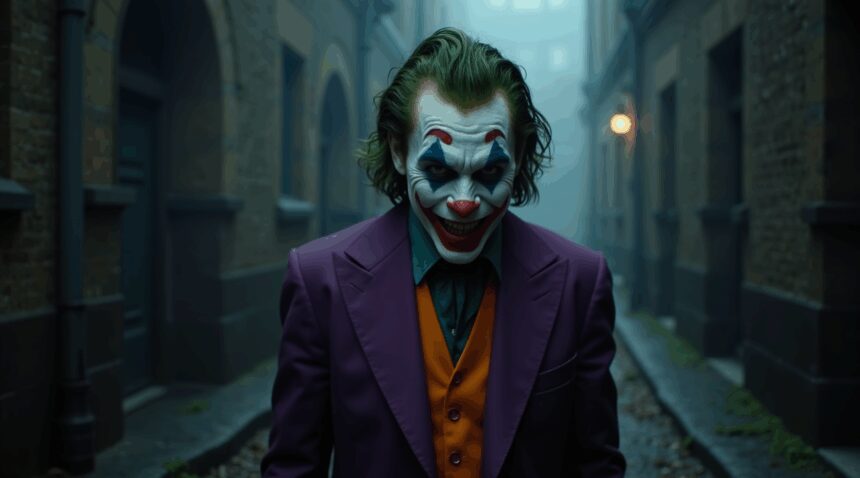Willem Dafoe was once seriously considered for the role of the Joker in Tim Burton’s 1989 Batman film, largely due to his intense and striking features that seemed tailor-made for the part.
Willem Dafoe and the 1989 Batman Film
In the early stages of production for Tim Burton’s landmark 1989 Batman film, Willem Dafoe emerged as a leading candidate for the role of the Joker. Screenwriter Sam Hamm even noted that Dafoe was an ideal physical fit, citing his angular cheekbones and a naturally intense demeanor that would translate perfectly on screen.
Despite this strong alignment between the actor’s persona and the iconic villain, Dafoe never received an official offer. The studio ultimately went with Jack Nicholson, whose established star persona and proven box office draw provided a safer and more commercially viable option.
Fan Campaigns and Industry Recognition
Over the years, Dafoe has become something of a cult favorite for fans of Batman, with persistent campaigns and online petitions pushing for his inclusion in the franchise. Yet, even with significant support from fans and acknowledgment from industry insiders, Dafoe has never appeared in a Batman film of any iteration.
His unique acting style and striking physical features have made him a prime choice in the eyes of many for roles such as the Joker — roles that require a blend of charisma, menace, and unpredictability.
Key Characteristics That Made Dafoe a Fan Favorite
- He has sharp facial features that visually align with the Joker’s twisted aesthetic.
- Dafoe’s mastery of dark, tormented roles adds depth to any potential comic book villain character he portrays.
- Fans recognize his potential to bring a unique layer to the Joker not previously explored in the live-action cinematic universe.
Proven Talent in Comic Book Roles
Even though Dafoe has been overlooked for Batman-related roles, he delivered an unforgettable performance as the Green Goblin in Sam Raimi’s Spider-Man series. His portrayal added layers of emotional depth and psychological complexity, proving his ability to embody a multi-dimensional comic book antagonist.
Notable Villainous Roles
- Norman Osborn / Green Goblin in Spider-Man (2002) and its sequels
- Bobby Peru in Wild at Heart (1990)
- John LeTour in Light Sleeper (1992), showcasing internal conflict and intensity
Hollywood’s Casting Patterns
The choice to cast major stars like Nicholson over lesser-known but talented individuals is reflective of a larger trend in Hollywood. Studios often prioritize commercial returns over artistic authenticity or fan support. This often results in overlooked talent, regardless of how fitting they may be for a given role.
Willem Dafoe’s ongoing absence from the Batman cinematic universe exemplifies how even the most passionate fan campaigns can struggle to influence studio decision-making when it clashes with financial priorities.
Willem Dafoe Was Actually Considered for the Joker in Tim Burton’s 1989 Batman
I discovered that Willem Dafoe’s connection to the Batman universe runs deeper than many fans realize. The acclaimed actor was indeed considered for the iconic role of the Joker in Tim Burton’s groundbreaking 1989 Batman film, though he never received an official offer.
The Perfect Physical Match
Screenwriter Sam Hamm recognized Dafoe’s potential early in the casting process, describing him as a perfect physical fit for the Joker character. Hamm specifically pointed to Dafoe’s sharp cheekbones and naturally intense appearance as ideal qualities for bringing the Clown Prince of Crime to life on the big screen. The distinctive angular features that have made Dafoe such a compelling character actor throughout his career aligned perfectly with the comic book villain’s menacing aesthetic.
Dafoe himself confirmed his involvement in casting discussions during interviews, stating that his name was ‘tossed around’ among the creative team. However, he was careful to clarify that they never offered it to me, suggesting the consideration never progressed beyond preliminary discussions. This revelation adds an intriguing “what if” scenario to Batman film history, especially considering how Dafoe would later excel as Norman Osborn in the Spider-Man franchise.
The Competition and Jack Nicholson’s Victory
The casting team for Burton’s Batman considered several prominent actors for the Joker role. The contenders included:
- James Woods, known for his intense dramatic performances
- John Lithgow, who could balance comedy with menace
- Tim Curry, whose theatrical background suited the character’s flamboyant nature
- Willem Dafoe, offering the perfect physical appearance
Ultimately, Jack Nicholson secured the role and delivered what became one of the most iconic villain portrayals in comic book film history. Nicholson’s interpretation set the standard for future Joker performances and helped establish the darker tone that would influence superhero cinema for decades. His casting proved instrumental in the film’s massive commercial success and cultural impact.
The decision to go with Nicholson over Dafoe likely came down to star power and box office appeal, as Nicholson was already an established Hollywood legend by 1989. While we can only imagine how Dafoe might have interpreted the character, his later work in villainous roles suggests he would have brought a uniquely unsettling energy to Gotham’s most dangerous criminal. The consideration of Warner Bros for different casting choices demonstrates how pivotal these early Batman films were in shaping the superhero genre’s future direction.
Why Dafoe Lost Out to Jack Nicholson’s Star Power
I find it fascinating that Willem Dafoe was actually considered for the Joker role in Tim Burton’s 1989 Batman film, yet audiences never got to see his interpretation of the iconic villain. The casting process reveals how Hollywood’s biggest productions balance artistic vision with commercial appeal.
The Star Power Decision
Burton and the studio executives ultimately chose Jack Nicholson over Dafoe for several compelling reasons:
- Nicholson’s established box office track record made him a safer investment for the massive production budget
- His distinctive acting style already aligned with Burton’s darker, more theatrical vision for the character
- The actor’s ability to command top billing alongside Michael Keaton provided additional marketing leverage
- Nicholson’s natural intensity and unpredictable screen presence perfectly matched the Joker’s chaotic nature
The decision wasn’t simply about talent—both actors possessed the skills necessary for the role. Instead, it came down to commercial viability and how each performer would serve the production’s broader goals. Nicholson brought instant credibility to what many considered a risky comic book adaptation.
Michael Keaton’s controversial Batman casting had already generated significant fan backlash, with many questioning whether the comedic actor could embody the Dark Knight’s brooding nature. Adding another relatively unknown quantity in Dafoe might have compounded the studio’s concerns about audience acceptance. Nicholson’s presence provided a stabilizing force that helped justify other unconventional choices.
The casting of major franchise films often prioritizes proven star appeal over pure artistic merit. While Dafoe would have delivered a compelling interpretation of the Joker, his profile in 1989 couldn’t match Nicholson’s decade-spanning career and Academy Award recognition. Burton needed an actor who could guarantee opening weekend numbers and international distribution deals.
This decision reflects broader patterns in Batman casting throughout the years. Studio executives consistently seek performers who can balance character requirements with commercial appeal. Industry leadership changes continue to influence how these major casting decisions unfold across different Batman projects.
Nicholson’s performance ultimately validated the choice, delivering a portrayal that became the standard against which future Joker actors would be measured. His ability to blend menace with dark humor created a template that influenced subsequent interpretations. The commercial success of Burton’s Batman also demonstrated how star power could elevate comic book adaptations into legitimate blockbuster territory.
Fan casting discussions often overlook these practical considerations that drive actual studio decisions. While Dafoe’s physical appearance and acting intensity might have created a more unsettling Joker, the business realities of 1989 Hollywood demanded a sure thing. Nicholson represented that certainty in ways that Dafoe, despite his considerable talents, couldn’t match at that point in his career.
The legacy of this casting decision extends beyond just one film. It established precedents for how studios approach major villain roles in superhero movies, emphasizing the importance of name recognition alongside dramatic capability. Even modern Batman projects continue to grapple with similar considerations when selecting their primary antagonists.
Interestingly, this wasn’t the last time Dafoe would be connected to comic book adaptations. His later work in the Spider-Man franchise as Green Goblin proved his exceptional ability to portray iconic villains. That performance demonstrated what Batman fans missed when studios chose commercial safety over artistic risk for Burton’s darker interpretation of Gotham City.
The 1989 Batman film’s success with Nicholson’s Joker created a template that influenced decades of superhero casting. It showed how the right star in a villain role could become as much of a draw as the hero themselves, setting expectations that continue to shape modern Batman productions.
Dafoe’s Perfect Villain Resume Makes His Batman Absence Even More Puzzling
Willem Dafoe’s extensive filmography reads like a masterclass in villainous performances, yet he’s never stepped foot in Gotham City on screen. His portrayal of Norman Osborn/Green Goblin in 2002’s Spider-Man established him as one of cinema’s most compelling antagonists. The intensity he brought to that role, combined with his naturally angular features and piercing eyes, created a villain that audiences simultaneously feared and found fascinating.
When Dafoe reprised his Green Goblin role in 2021’s Spider-Man: No Way Home, he reminded viewers why his villain performances remain unmatched. His ability to shift between Norman’s vulnerable humanity and the Goblin’s maniacal fury showcased a range that few actors possess. The performance earned widespread critical acclaim and reignited discussions about his untapped potential in other superhero properties.
The Natural Joker Debate
Fan casting discussions consistently point to Dafoe as an ideal Joker candidate. His distinctive appearance – sharp cheekbones, expressive eyes, and naturally unsettling smile – seems custom-made for Batman’s greatest nemesis. The actor’s rabid intensity in roles ranging from Platoon to The Lighthouse demonstrates his ability to embody unhinged characters without descending into parody.
Critics and fans often reference his transformative capabilities and willingness to fully commit to bizarre character choices. His work in films like Wild at Heart and The Boondock Saints shows he can balance dark humor with genuine menace. These qualities would translate perfectly to the unpredictable nature of the Clown Prince of Crime.
A Career Built on Iconic Villains
Dafoe’s villain portfolio extends far beyond superhero properties. His filmography includes memorable antagonists across multiple genres, each performance carefully crafted to maximize psychological impact. Consider these standout villain roles that demonstrate his versatility:
- Max Schreck in Shadow of the Vampire, where he played both actor and monster with equal conviction
- Bobby Peru in Wild at Heart, delivering one of cinema’s most disturbing supporting performances
- John Geiger in Speed 2, proving he could elevate even formulaic action thrillers
- Ryuk in Death Note, where his voice work brought the supernatural death god to terrifying life
With over 150 film credits spanning four decades, Dafoe has consistently chosen projects that challenge both himself and audiences. His collaborations with directors like Lars von Trier, David Lynch, and Sam Raimi showcase an actor unafraid of difficult material or unconventional characters.
The entertainment industry has experienced significant shifts in recent years, with new leadership changes at major studios potentially opening doors for fresh casting choices. Warner Bros. has explored various approaches to Batman properties, from darker interpretations to more experimental takes on classic characters.
Recent years have seen Hollywood embrace unconventional casting decisions for superhero properties. Phoenix’s Joker proved audiences hunger for mature, psychologically complex takes on familiar villains. Dafoe’s proven track record with similar character studies suggests he could deliver equally compelling interpretation of any Batman villain.
Despite his perfect qualifications and widespread fan support, Dafoe remains absent from Batman’s cinematic universe. Whether this stems from scheduling conflicts, creative differences, or simple oversight remains unclear. What’s certain is that his unique talents seem tailor-made for the dark, psychological stories that define Batman’s best films.
The actor’s willingness to embrace physical transformation and psychological complexity would serve any Gotham storyline well. His presence alone elevates any project, bringing both gravitas and unpredictability to screen. The question isn’t whether Dafoe would excel in a Batman movie – it’s why filmmakers haven’t recognized this seemingly obvious casting opportunity.
https://www.youtube.com/watch?v=5uJgYRTXvsY
Decades of Fan Campaigns Haven’t Changed Hollywood’s Mind
Willem Dafoe’s absence from Batman films stands as one of Hollywood’s most perplexing casting oversights. Fan campaigns have persisted for over two decades, with countless petitions, social media movements, and passionate discussions advocating for his inclusion in Gotham’s dark universe. These grassroots efforts have generated significant online buzz, yet studio executives continue to overlook the actor’s obvious potential.
Official cast lists and franchise records definitively confirm that Dafoe has never appeared in any Batman production. He hasn’t voiced animated characters, portrayed live-action villains, or even made cameo appearances across the entire Batman film catalog. This complete exclusion becomes more striking when considering his extensive work in comic book adaptations, including his iconic portrayal of Green Goblin in multiple Spider-Man films.
Fan Groups Push for Recognition
Multiple fan-driven initiatives have emerged over the years, each attempting to convince studios of Dafoe’s perfect fit for Batman’s rogues gallery. Online communities regularly compile comparison images showing his resemblance to classic comic book villains, particularly the Joker. These campaigns have gathered hundreds of thousands of signatures across various petition platforms.
The persistence of these movements reflects genuine belief in his suitability for Batman films. Fans consistently point to his ability to portray unhinged characters with depth and complexity. His distinctive facial features and intense performance style align naturally with Gotham’s theatrical villain aesthetic. Despite this overwhelming fan support, casting directors have repeatedly chosen other actors for major villain roles.
Industry Decisions Remain Unchanged
Hollywood’s casting choices often prioritize different factors than fan preferences. Studio executives consider box office appeal, current market trends, and established relationships when making major casting decisions. While Dafoe possesses undeniable talent and fan approval, his exclusion suggests these business considerations outweigh popular demand.
Recent Batman productions have continued this pattern, with directors selecting actors like Joaquin Phoenix, Heath Ledger, and Paul Dano for iconic villain roles. Each casting announcement generates renewed disappointment among Dafoe supporters who see missed opportunities. The Warner Bros leadership changes haven’t altered this trajectory.
The actor’s film franchise involvement spans multiple decades and comic book properties, making his Batman absence even more notable. He’s demonstrated remarkable range across various genres, from psychological thrillers to action blockbusters. His Green Goblin performances proved his mastery of complex villain roles, yet Batman producers continue looking elsewhere.
Even animated Batman projects have bypassed Dafoe for voice acting roles that seem perfectly suited to his distinctive vocal qualities. His work in animated films like Finding Nemo shows his versatility extends beyond live-action performances. Voice casting for Batman animated features consistently chooses other actors despite fan enthusiasm for his potential contributions.
Industry insiders rarely comment on specific casting decisions, leaving fans to speculate about the reasons behind Dafoe’s exclusion. Some theorize about scheduling conflicts, while others suggest creative differences between his acting style and directors’ visions. The real reasons remain largely unknown to the public.
The disconnect between fan desires and actual casting choices highlights the complex nature of film production decisions. Popular demand doesn’t always translate into studio action, particularly when multiple factors influence final selections. Despite passionate advocacy from dedicated fan bases, Dafoe’s Batman absence continues indefinitely.
Recent Batman projects have sparked renewed discussions about his potential involvement, with fans hoping each new announcement might finally include his name. Whether discussing HBO Max’s upcoming productions or theatrical releases, his supporters maintain optimism that future projects might break this decades-long pattern of exclusion.

Dafoe’s Career Path Took Him Everywhere Except Gotham
Born on July 22, 1955, in Appleton, Wisconsin, Willem Dafoe has crafted one of Hollywood’s most distinctive careers through what he describes as his artistic curiosity. I’ve observed how his ability to bring depth to even the darkest characters has earned him four Academy Award nominations and established him as one of cinema’s most versatile performers.
Dafoe’s filmography reads like a masterclass in genre versatility. He’s worked extensively across both indie films and major blockbusters, collaborating with renowned directors from Martin Scorsese to Sam Raimi. This range becomes even more remarkable when considering his track record with superhero films—he’s appeared as the Green Goblin in multiple Spider-Man movies and voiced characters in animated features, proving his comfort with comic book adaptations.
The Missing Piece in Batman’s Universe
Despite his extensive work in Hollywood, Dafoe’s filmography notably lacks any involvement with the official Batman universe. This absence becomes particularly striking when examining recent developments in DC’s cinematic landscape. While directors like Dan Lin are being considered for major roles at Warner Bros, and projects like HBO Max’s Aztec Batman movie expand the franchise’s scope, Dafoe remains conspicuously absent from Gotham’s roster.
The actor has stated he was never offered a role in a Batman film and has not publicly declined one, even though fans and insiders consistently recommend him for Gotham’s most well-known villains. His intense screen presence and ability to embody psychological complexity would seemingly make him perfect for characters like the Joker or Scarecrow. Industry observers frequently point to his theatrical background and knack for unsettling performances as ideal qualifications for Batman’s rogues gallery.
What makes this absence even more curious is Dafoe’s proven success in similar roles. His portrayal of Norman Osborn demonstrated his ability to balance corporate sophistication with unhinged villainy—qualities that would translate perfectly to characters like the Penguin or even a more grounded version of the Riddler. Unlike some casting situations in recent DC projects, such as The Flash movie’s challenges, Dafoe brings no controversy to the table, only decades of acclaimed performances and professional reliability.
This career gap represents one of cinema’s great “what ifs,” especially as Batman continues evolving across different media platforms and interpretations. Dafoe’s artistic curiosity and willingness to embrace challenging roles suggest he would have brought something unique to any Batman project.

Sources:
Screen Rant – “Willem Dafoe Was Actually Considered for the Joker in Tim Burton’s 1989 Batman”
Screen Rant – “Why Dafoe Lost Out to Jack Nicholson’s Star Power”
Screen Rant – “Dafoe’s Perfect Villain Resume Makes His Batman Absence Even More Puzzling”
Screen Rant – “Decades of Fan Campaigns Haven’t Changed Hollywood’s Mind”
Screen Rant – “Dafoe’s Career Path Took Him Everywhere Except Gotham”


